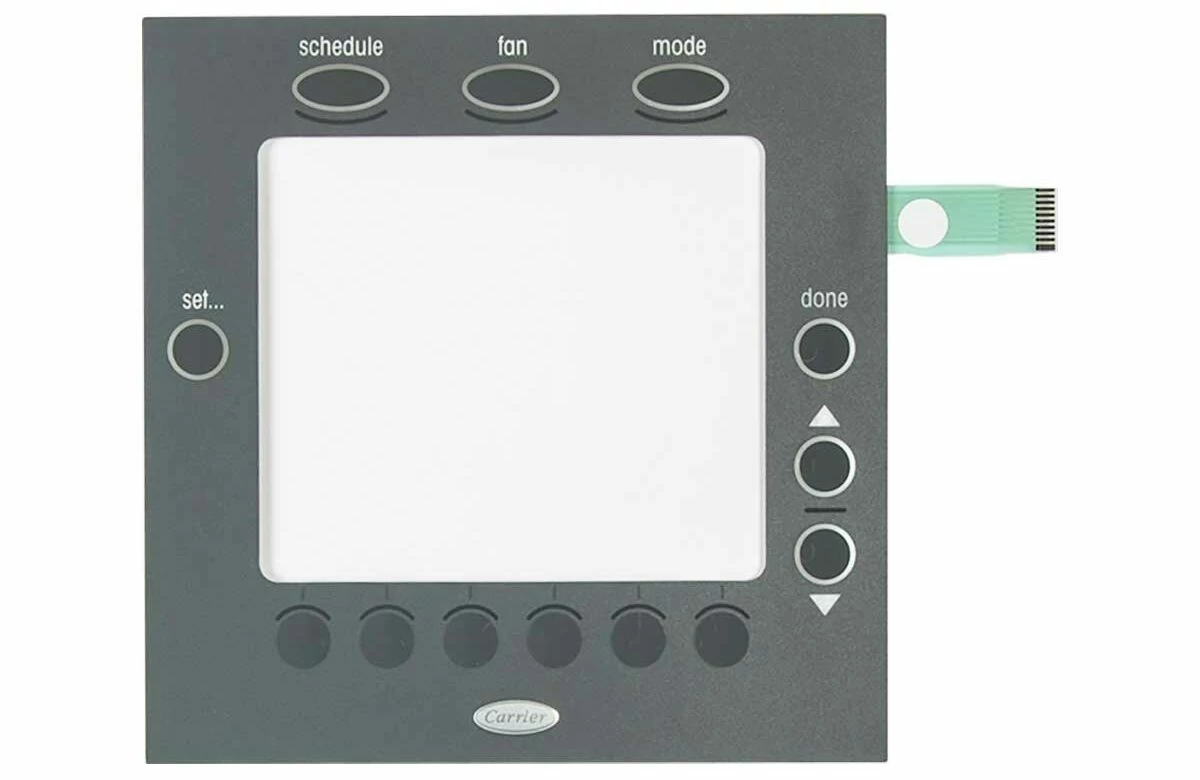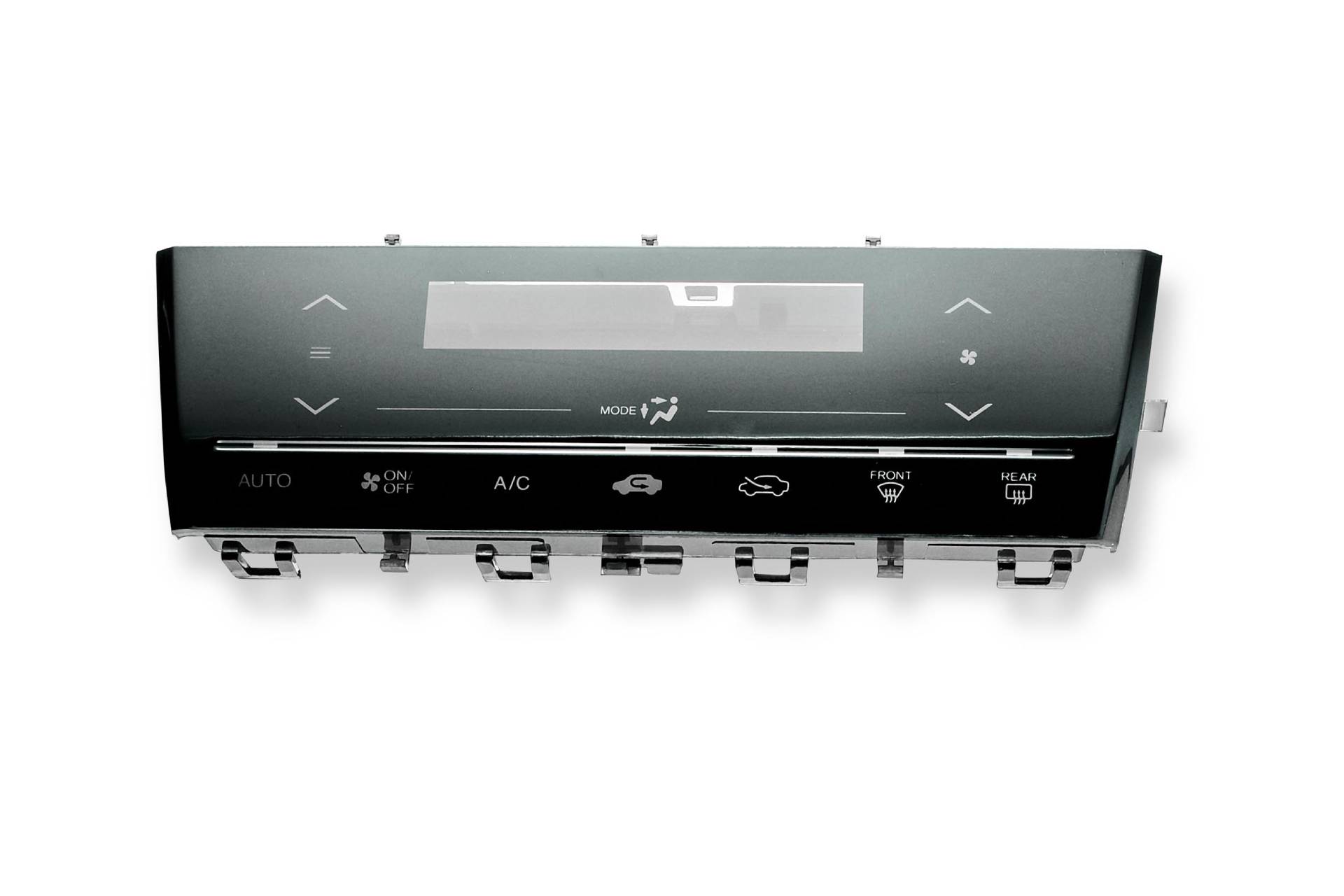Unique Designs by a Professional Membrane Switch Manufacturer
Comprehending the Significance of Membrane Switch in Modern Electronics and Their Applications
Membrane changes serve as a vital element in contemporary electronics, supplying an effective interface for user interaction. Their lightweight and personalized nature makes them suitable for a variety of applications throughout varied industries. Recognizing their crucial components and benefits can offer understandings right into their growing significance. As modern technology continues to advance, the evolution of Membrane changes elevates inquiries regarding their future applications and layout technologies. What lies in advance in this dynamic field?
What Are Membrane Switches?
Membrane switches are essential parts in modern electronic devices, offering as customer interfaces that facilitate interaction in between tools and users. These switches contain numerous layers, including a graphic overlay, a glue layer, and a circuit layer, every one of which interact to produce a functional and durable user interface. The layout enables a flat, low-profile option that can be customized concerning dimension, shape, and visual look, making them appropriate for various applications, from customer electronic devices to clinical gadgets. The responsive comments offered by Membrane changes improves user experience, while their resistance to dust and wetness makes them suitable for challenging atmospheres. Membrane switches can integrate functions such as backlighting and printed graphics, better increasing their use. Their convenience and robustness make them a favored choice in sectors where dependability and convenience of usage are extremely important, eventually adding to the seamless operation of contemporary digital devices.
Trick Elements of Membrane Switches Over
While various elements add to the functionality of a membrane layer button, three main layers play significant roles in its style and operation. The leading layer, commonly made from a durable polymer, works as the interface for individual communication, commonly featuring published graphics and icons. Beneath this is the spacer layer, which preserves the necessary range in between the leading layer and the circuit layer. This spacer layer guarantees that the switch activates just when pushed, protecting against unexpected inputs. The circuit layer consists of conductive traces that complete the electric circuit when the top layer is dispirited. These traces can be made from various products, consisting of copper or silver. With each other, these components develop a trusted and robust device that is compact and functional, suitable for a variety of digital applications, from home home appliances to medical gadgets. Comprehending these vital parts is essential for appreciating the overall capability of Membrane switches.
Advantages of Making Use Of Membrane Switches

Membrane Switch Production Refine
Understanding the Membrane switch manufacturing procedure reveals the intricate steps involved in creating these vital components. The process typically starts with the design phase, where designs and specs are created using specialized software application. Following this, the graphic overlay is printed on a flexible substratum, often utilizing high-resolution printing techniques to guarantee clarity and precision.Next, the glue layers are used, which serve to bond the various components with each other. The circuit layers, made from conductive inks or products, are then printed onto a different substrate. These layers are carefully lined up and laminated to create a useful switch.After assembly, the switches undertake checking to verify functionality and durability. Quality assurance procedures are executed throughout the procedure to determine and rectify any kind of flaws. The completed Membrane buttons are packaged and prepared for distribution, all set to satisfy the demands of modern-day electronic applications.
Applications of Membrane Switches in Numerous Industries
Membrane buttons are progressively made use of across numerous industries, especially in clinical tools and customer electronic devices. In the medical field, they offer reputable control interfaces for tools that call for exact operation. In consumer electronic devices, these switches improve customer interaction by providing responsive and sleek interfaces. Receptive Medical Tools Control
Numerous modern clinical devices make use of Membrane switches for streamlined operation and improved individual communication. These buttons give a trustworthy, long lasting user interface for a variety of applications, including diagnostic equipment, patient monitoring systems, and surgical instruments. Their personalized styles allow for specific designs that can fit the special demands of medical care specialists, ensuring intuitive navigating and reliable accessibility to crucial features. Furthermore, Membrane switches are resistant to impurities, making them ideal for clean and sterile atmospheres. The tactile feedback they use can enhance individual confidence, reducing the threat of mistakes during important clinical procedures. In general, the integration of Membrane switches in clinical devices considerably adds to enhanced operational performance and individual security in healthcare setups.
Consumer Electronic Devices Interfaces
In the domain name of customer electronics, Membrane switches play an essential duty in improving user interfaces throughout a large range of devices. These buttons are integral to items such as remote controls, microwaves, and pc gaming consoles, offering a straightforward and effective user interface. Their layout permits a seamless combination of graphics and capability, allowing suppliers to produce smooth, modern appearances without jeopardizing use. Membrane buttons are also understood for their longevity, typically withstanding extensive usage and direct exposure to various environmental problems. In addition, they can incorporate features like backlighting and tactile feedback, additional enhancing the customer experience. As customer demands for sophisticated yet user-friendly user interfaces expand, Membrane switches remain to be an essential part in advancing electronic gadget capability.
Layout Factors To Consider for Membrane Switches
Creating efficient Membrane switches needs mindful attention to various factors that influence both functionality and individual experience. One vital consideration is the choice of materials, as they can impact sturdiness, tactile comments, and aesthetic appeal. Selecting a suitable adhesive is necessary for assuring long-lasting bond and resistance to environmental factors.In addition, the format and layout of the button need to suit user interaction, with button dimensions and spacing maximized for simplicity of use. The incorporation of graphics and labeling need to focus on clarity and visibility under numerous illumination conditions.Consideration of electrical features, such as actuation force and switch sensitivity, will boost the responsiveness of the Membrane switch. The style should accommodate making processes to assure cost-effectiveness and prompt production. On the whole, a well-thought-out layout improves both the user and the capability experience of Membrane buttons in modern electronic devices.

Future Trends in Membrane Switch Innovation
As technology remains to advance, Membrane switches are poised to incorporate brand-new advancements that will boost their capability and application in various fields. why not check here One substantial fad is the incorporation of durable and flexible materials, which will certainly raise the lifespan and reliability of these switches. Improved surface structures and adjustable graphics are additionally prepared for, enabling more intuitive user interfaces.Moreover, the combination of clever technology, such as touch-sensitive surfaces and haptic feedback, is expected to improve user interaction, making Membrane switches more receptive and interesting. In addition, breakthroughs in published electronic devices will certainly allow more complex circuitry within thinner accounts, additionally broadening style possibilities.Sustainability will also play a vital function in future advancements, as producers explore environment-friendly products and production procedures. In general, these trends will certainly ensure that Membrane switches continue to be appropriate and important in a significantly digital and interconnected globe.
Frequently Asked Questions
Just How Do Membrane Switches Over Compare to Standard Mechanical Switches?
Membrane switches over offer benefits over traditional mechanical buttons, including lowered dimension, lighter weight, and improved longevity. They typically offer a sealed surface, boosting resistance to dust and dampness, making them optimal for varied applications.
What Materials Are Generally Utilized in Membrane Switch Building And Construction?

Can Membrane Switches Over Withstand Extreme Environmental Issues?
Membrane switches can stand up to extreme environmental problems, relying on their style and materials. Premium buildings typically feature resilience against temperature variations, moisture, and exposure to chemicals, making them suitable for various requiring applications across industries.
For How Long Do Membrane Switches Typically Last Before Failure?
Membrane changes commonly show a life-span ranging from 1 to 10 million actuations, depending upon factors such as use regularity, environmental problems, and producing quality. Normal maintenance can expand their longevity and operational reliability substantially.
Are Membrane Switches Over Adjustable for Details Applications?
Membrane buttons are certainly personalized for details applications. They can be tailored in capability, size, and style, permitting manufacturers to satisfy one-of-a-kind individual requirements and boost item visual appeals while maintaining operational performance and toughness. Membrane buttons are important elements in modern-day electronics, offering as customer interfaces that facilitate communication between devices and users. The responsive feedback given by Membrane switches over improves customer experience, while next page their resistance to dirt and moisture makes them excellent for testing environments. The unification of graphics and labeling must prioritize clearness and exposure under various lighting conditions.Consideration of electrical characteristics, such as actuation force and switch sensitivity, will enhance the responsiveness of the Membrane switch. Boosted surface area appearances and personalized graphics are additionally prepared for, permitting for even more user-friendly individual interfaces.Moreover, the combination of wise technology, such as touch-sensitive surfaces and haptic comments, is expected to improve customer communication, making Membrane changes much more responsive and interesting. Membrane changes offer benefits over standard mechanical switches, including lowered dimension, lighter weight, and enhanced resilience.